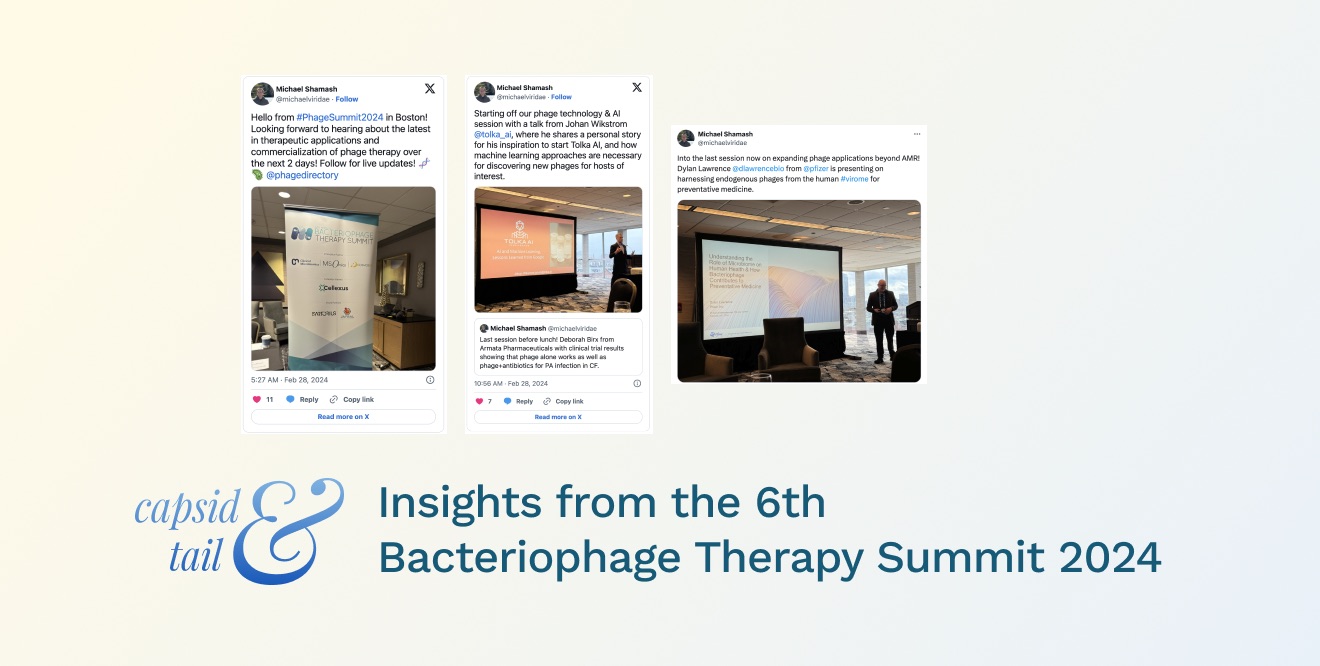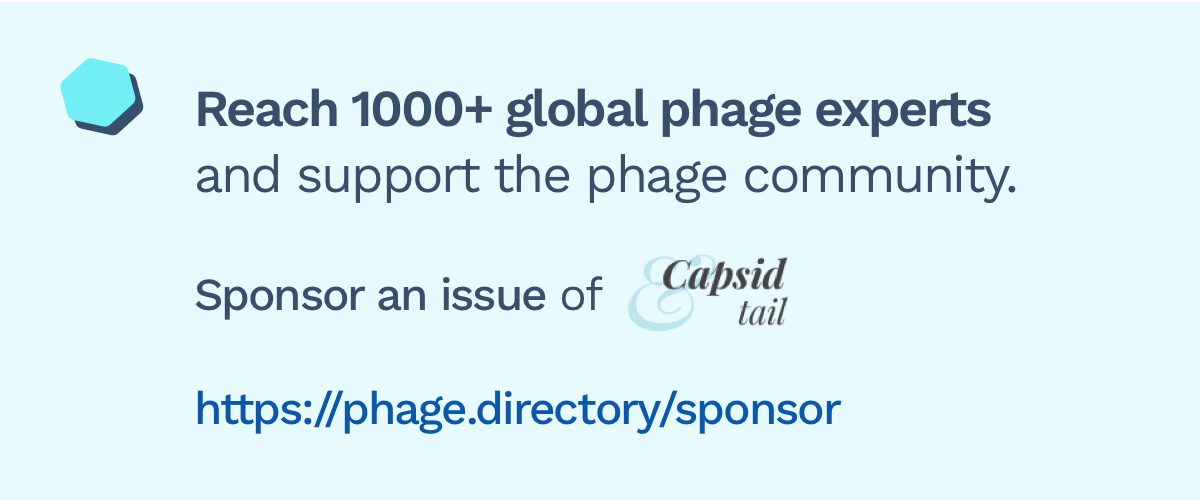One hundred personalized phage treatments, combined! Not only did Jean-Paul Pirnay and colleagues at the Queen Astrid Military Hospital in Belgium provide phages for 100 cases, they also published a full analysis of the outcomes! This led Nature Microbiology to write an editorial advocating for phage therapy development (win!). See also this commentary on the paper from Jon Iredell and colleagues, and this blog post and Twitter thread by coauthor Sabrina Green, who breaks down the main learnings.
Katie Wiebe (Cytophage Technologies, Inc) and colleagues have outlined a scalable and efficient production strategy for the ETEC phage ‘Phage75’, which accounts for infection load, MOI, temperature, media, harvest time, and host bacteria (they screened variables impacting production in a high throughput OD assay). They demonstrate this works in flasks at 3 scales as well as in the Cellexus CellMaker bioreactor.
Qingquan (Kevin) Chen (Stanford University) and colleagues have demonstrated that filamentous Pf phages of P. aeruginosa hinder antibiotic diffusion through CF sputum via electrostatic binding.
In a recent perspective piece, Christine Szymanski (University of Georgia) highlights the limitless resources for exploitation that phages provide. She discusses their use in various fields such as phage therapy, gene transduction, and glyco-tool discovery, among others.
The Centre for Phage Research at the University of Leicester, UK is celebrating its one-year anniversary! Martha Clokie and Andrew Millard reflect on the first year.







